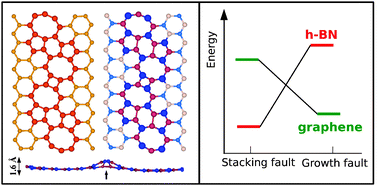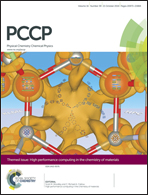Structural instabilities and wrinkles at the grain boundaries in 2-D h-BN: a first-principles analysis
Abstract
The structure of grain boundaries (GBs) or interfaces between nano-forms of carbon determines their evolution into 3-D forms with nano-scale architecture. Here, we present a general framework for the construction of interfaces in 2-D h-BN and graphene in terms of (a) stacking faults and (b) growth faults, using first-principles density functional theoretical analysis. Such interfaces or GBs involve deviation from their ideal hexagonal lattice structure. We show that a stacking fault involves a linkage of rhombal and octagonal rings (4 : 8), and a growth fault involves a linkage of paired pentagonal and octagonal rings (5 : 5 : 8). While a growth fault is energetically more stable than a stacking fault in graphene, the polarity of B and N leads to the reversal of their relative stability in h-BN. We show that the planar structure of these interfacing grains exhibits instability with respect to buckling (out-of-plane deformation), which results in the formation of a wrinkle at the grain boundary (GB) and rippling of the structure. Our analysis leads to prediction of new types of low-energy GBs of 2-D h-BN and graphene. Our results for electronic and vibrational signatures of these interfaces and an STM image of the most stable interface will facilitate their experimental characterization, particularly of the wrinkles forming spontaneously at these interfaces.


 Please wait while we load your content...
Please wait while we load your content...